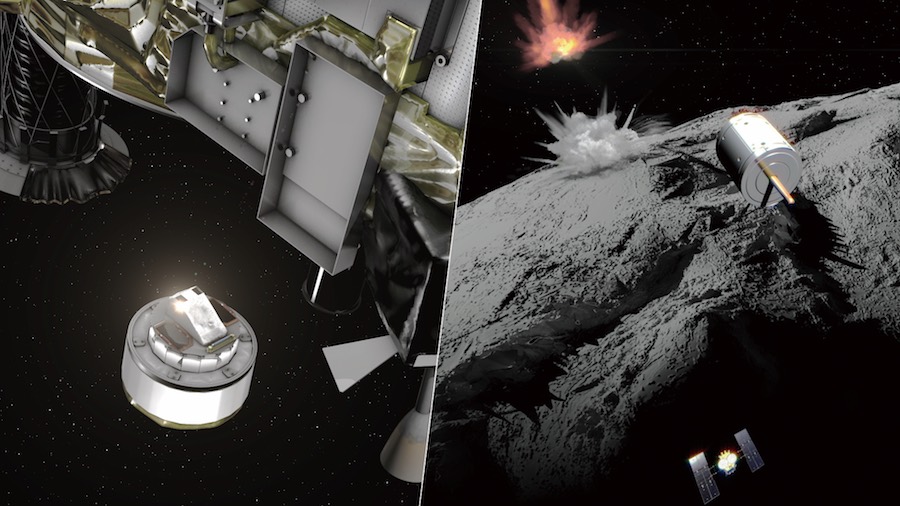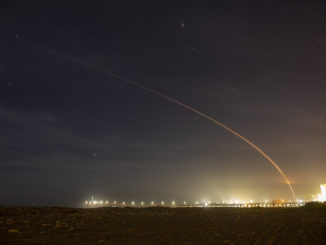
Japan’s Hayabusa 2 spacecraft dropped an explosive charge on asteroid Ryugu on Thursday night in an audacious attempt to carve a crater on the object, exposing pristine underground rocks to be retrieved by the probe for return to Earth.
Six weeks after snagging a sample from Ryugu’s rugged surface, Hayabusa 2 released a device that will use explosives to drive a copper impactor into the asteroid at high speed. The dramatic experiment had never been attempted in space before, and the Hayabusa 2 spacecraft retreated to a safe position on the other side of Ryugu to stay safe during the impact event.
Under the influence of Earth’s gravity, the explosive package weighs about 21 pounds, or 9.5 kilograms. A shaped charge consisting of a plastic explosive was armed to detonate and accelerate a copper plate toward the asteroid’s surface at up to 4,500 mph (2 kilometers per second) to create a new crater on Ryugu.
Scientists expected the impactor would excavate a crater roughly 30 feet, or 10 meters, wide.
The device used Thursday was called the Small Carry-On Impactor, and it was one of several deployable modules carried to Ryugu by Hayabusa 2. Last year, Hayabusa 2 released three landers to explore the asteroid’s surface.
Rocky debris blasted away by the impactor’s collision should expose materials from inside the asteroid, where rock specimens are shielded from radiation and other weathering affects from sunlight and extreme temperature swings. Scientists hope Hayabusa 2 can pick up a sample from the crater in the coming weeks and bring the rocks back to Earth in late 2020 for analysis in laboratories.
Officials from the Japan Aerospace Exploration Agency said shortly after Thursday’s daring maneuver that telemetry radioed back to Earth from Hayabusa 2 indicates it deployed the Small Carry-On Impactor as planned, then released a tiny robot with a camera to record the explosion and impact.
Meanwhile, Hayabusa 2 backed away and traveled to a safe position on the other side the asteroid before the detonation.
JAXA officials were waiting for images relayed from the camera robot to confirm the detonation occurred as planned.



